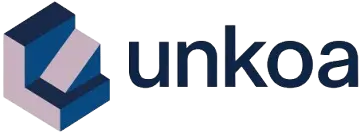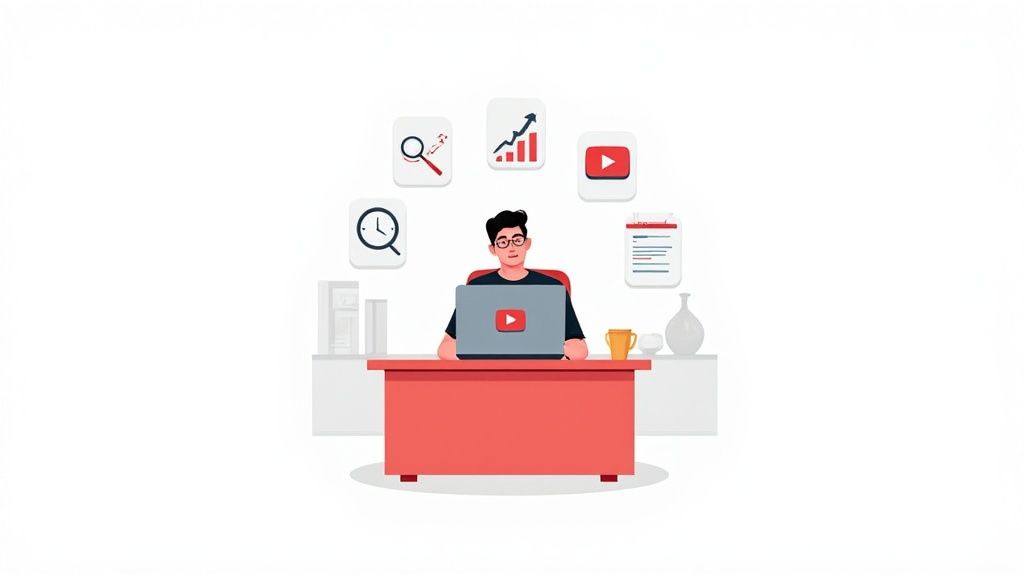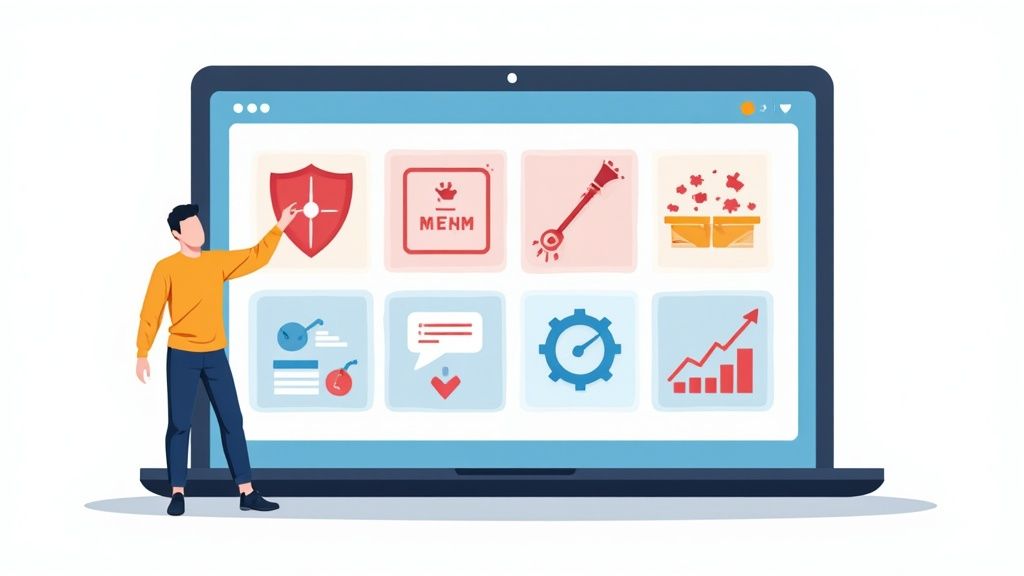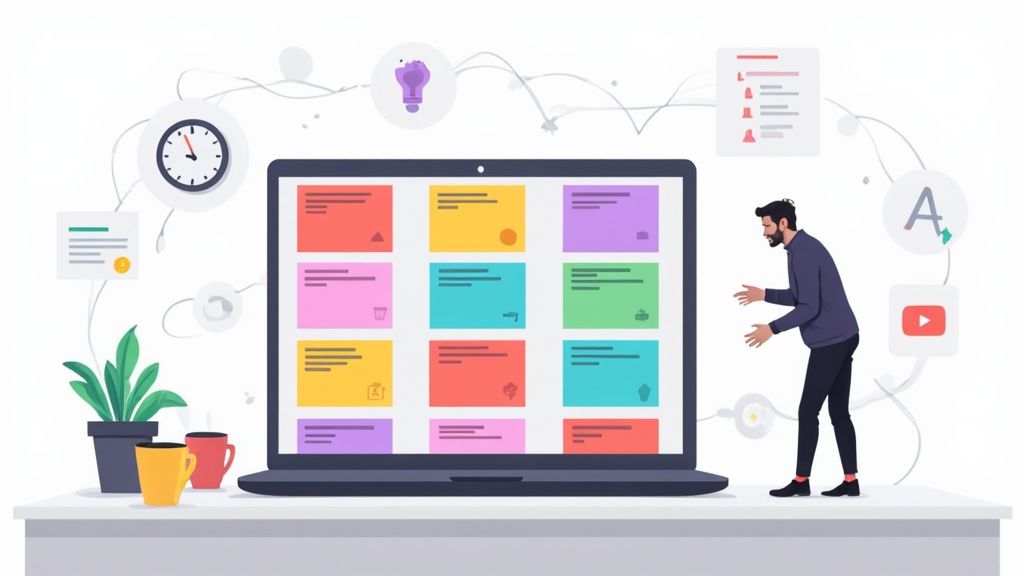Handling the "Why Not WordPress?" Objection: A Sales-Call Framework to Sell Webflow to Clients
A practical script to confidently guide clients past WordPress familiarity and recommend Webflow for small-business websites.
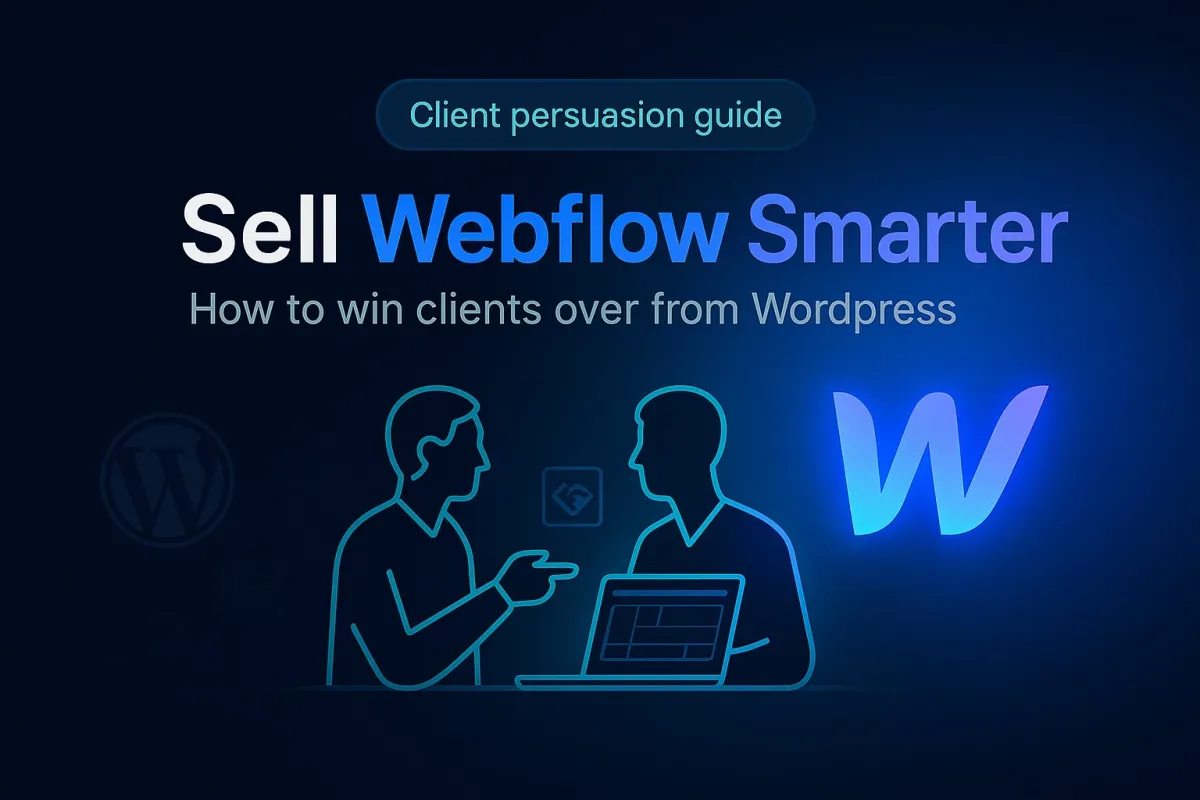
Small-business clients often default to WordPress. It’s everywhere, it’s free (sort of), and it feels like a safe bet. So when you hear "Why not WordPress?" on a sales call, don’t dive into a feature debate. Shift the conversation. This framework shows you how to handle that moment - step by step - so you can sell Webflow in a confident, client-first way. You’ll cover cost, maintenance, security, SEO, and features without getting stuck defending the platform.
Use LAER: The framework that keeps the call on track
Think of LAER as your anchor when objections pop up:
- Listen: Let them explain why they’re leaning toward WordPress (maybe cost, plugins, or "it’s what we know").
- Acknowledge: Validate without defensiveness. "You’re right - WordPress is everywhere. Totally makes sense to ask."
- Explore: Ask what actually matters to them: lower costs, ease of editing, security, SEO, flexibility?
- Respond: Tie Webflow’s strengths back to their priorities, calmly and clearly.
Key takeaway: "Why not WordPress?" isn’t really about tools. It’s about trust and comfort. LAER steers you toward value, not debate.
Objection 1: "We’re used to WordPress - safer to stick with it."
Script starter:
Client: "WordPress is everywhere. Why not just use it?"
You: "You’re right - WordPress is hugely popular. For day-to-day use though, most non-technical teams find Webflow easier. You edit content right on the live page - click, type, publish - no messy backend. Want to see a 60-second demo?"
Why this works:
- You acknowledge familiarity without being defensive.
- You give them a simple, direct benefit: on-page editing.
- A quick demo is often the turning point - they see it and realize it’s simpler.
Helpful resource: Using Webflow as a Selling Point for Web Design Services
Objection 2: "Isn’t Webflow more expensive? WordPress is free."
WordPress software might be free, but running it isn’t. Costs usually stack up: hosting, premium plugins, theme licenses, developer time for updates or fixes, plus security patches. With Webflow, those piecemeal costs collapse into one predictable platform fee that includes hosting, security, backups, and zero plugin patching.
Script starter:
You: "Bare-bones WP hosting looks cheaper, but most small businesses pay more over time in plugins, maintenance, and surprise fixes. With Webflow, you avoid that ‘maintenance tax.’ Everything runs in one place, so your time and money stay focused on growth."
Objection 3: "Is Webflow secure? WordPress is established."
Address this with one sharp fact and then explain the design difference.
- 90% of hacked CMS sites were WordPress in one major analysis.
- Webflow doesn’t rely on plugins, so there are fewer weak points. Security, updates, and hosting are managed for you at an enterprise level.
Script starter:
You: "WordPress can be secured, but it takes constant monitoring. Webflow cuts that headache. With no plugins to babysit, automatic updates, and secure hosting, you get fewer risks and fewer rescue missions."
Objection 4: "Can Webflow do everything we need? What about plugins?"
Keep it grounded in what they actually need (blog, forms, e-commerce, CRM, etc.). Then match those to Webflow’s capabilities:
- Blog/CMS: Flexible content types, easy on-page editing.
- Forms/CRM/Email: Native forms and simple integrations.
- E-commerce: Handles most small-to-mid stores right out of the box.
- Custom needs: Add custom code without plugin clutter.
- Not locked in: You can export the site’s code anytime.
Script starter:
You: "Based on what you need, Webflow handles it directly or with light integrations. No messy plugin piles. If something niche comes up, we can drop in custom code or connect the right service."
Helpful resource: WordPress vs. Webflow: Why Webflow Wins Out for Contemporary Website Design
Objection 5: "Will Webflow hurt our SEO or speed?"
Reassure them and share a real outcome
- Webflow covers all the SEO basics: titles, meta descriptions, alt text, clean markup, and global CDN hosting.
- The code output is lean, which usually means faster load times than plugin-heavy WordPress builds.
- One agency saw organic traffic and rankings improve after migrating from WordPress to Webflow.
Script starter:
You: "Google doesn’t reward the CMS - it rewards fast, structured pages and good content. Webflow gives you everything you need to nail the technical side, but without plugin bloat weighing it down."
A quick call flow you can start using
- Open: "Totally fair question - WordPress is familiar. Before I recommend anything, what matters more: editing ease, cost, security, SEO, or flexibility?"
- Reflect their priorities: "Got it - ease of updates and no surprise maintenance are top priorities."
- Show a 60-second demo of live on-page editing in Webflow.
- Reframe cost: "WordPress software is free, but plugins, hosting, and upkeep add up. With Webflow, hosting, security, and updates are all included."
- Calm security fears with the hacked-site stat and explain Webflow’s reduced attack surface.
- Map their needs to actual Webflow features (CMS, forms, e-commerce, integrations, code export).
- Close with a low-risk next step: "I’ll spin up a quick mock in Webflow so you can try editing before deciding."
Helpful resource: Webflow Explained: Features, Costs, and Limitations
Myth vs. Fact: Fast talking points
- Myth: "WordPress is cheaper."
Fact: The software is free, but real-world costs add up fast. Webflow bundles those into one predictable fee. - Myth: "You need plugins for SEO."
Fact: Webflow covers core SEO directly, plus fast hosting and clean code help rankings. See the migration case study. - Myth: "WordPress is safer because it’s popular."
Fact: Popularity makes it a top target. 90% of hacked CMS sites were WordPress. - Myth: "You’re locked into Webflow."
Fact: You can export your code anytime.
FAQs you can answer instantly
Why use Webflow instead of WordPress?
Webflow combines design, CMS, hosting, security, and backups in one platform. No plugin chaos. Easier editing. Predictable costs.
Is Webflow better for a small business?
Yes, for most. Faster, cleaner, and lower-maintenance than WordPress long term.
Will our SEO suffer without Yoast?
No. You get all the essentials - titles, metas, clean URLs, structured markup - directly in Webflow. Plus, many sites see SEO improve after migrating.
Which is more secure?
Webflow cuts risk by eliminating plugin vulnerabilities and managing updates/hosting for you. 90% of hacked CMS sites were WordPress.
Are we locked in?
Not at all. You can export your code whenever you want. Most clients stay because life gets simpler without constant patching.
Close with confidence
Don’t try to "win" by out-arguing WordPress. Solve the problem in front of you. If ease matters, show the Editor. If cost is a worry, compare total cost of ownership. If security is the fear, point to reduced attack surfaces. And always offer a next step that feels safe and low-commitment: "I’ll spin up a quick mock in Webflow so you can try editing yourself before deciding."
